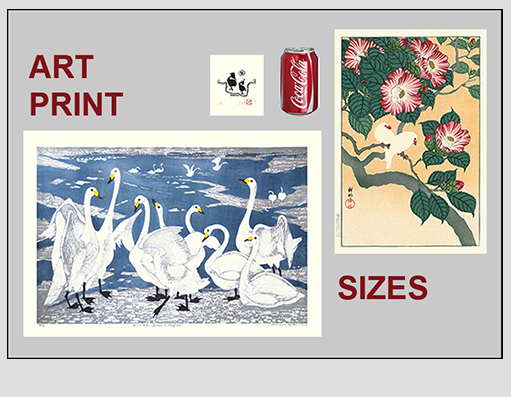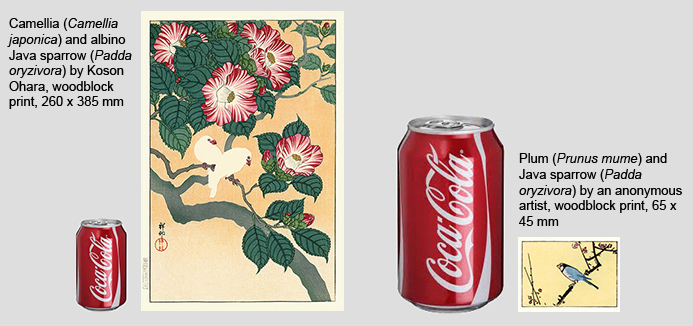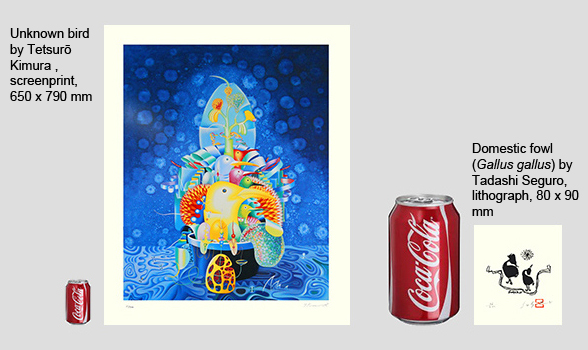Reader Collection > Blog > Art Print Sizes |
||
 |
||
| Most printed art is made by first drawing the picture design on a hard surface (e.g., wood, metal, stone, mesh fabric) then inking the surface, placing a piece of paper on the inked surface and applying pressure to transfer the ink to paper. Picture size is determined by the type of hard surface chosen to make the print. In Japan, wood has been the most popular choice and, until recently, maximum picture size was set by the diameter of the tree stem from which the wooden surface was made. The largest pictures were about 260 x 390 mm which is equivalent to 2 x 3 cans of coca cola stacked lengthwise. The smallest pictures were less than half the height of a single can of coca cola (henceforth abbreviated by cc). One example of each of these two sizes, chosen from the Reader Collection of Japanese Art, is shown below. | ||
 |
||
| The invention of plywood allowed larger pieces of wood to be used as a surface for printmaking. Starting in the 1950s pictures up to 5 x 8 cc (i.e., almost three times larger than any earlier printed picture) have been made by Japanese artists. One example is shown below. | ||
|
||
| The 1950s also saw the adoption of surfaces other than wood for printmaking in Japan. Intaglio prints were made using copper plates, lithographic prints were made using stone slabs and screenprints were made using mesh fabric. Picture size ranged from 0.75 cc to 5 x 7 cc. Examples of these size extremes are shown below. | ||
 |
||
Additional Reading |
||
